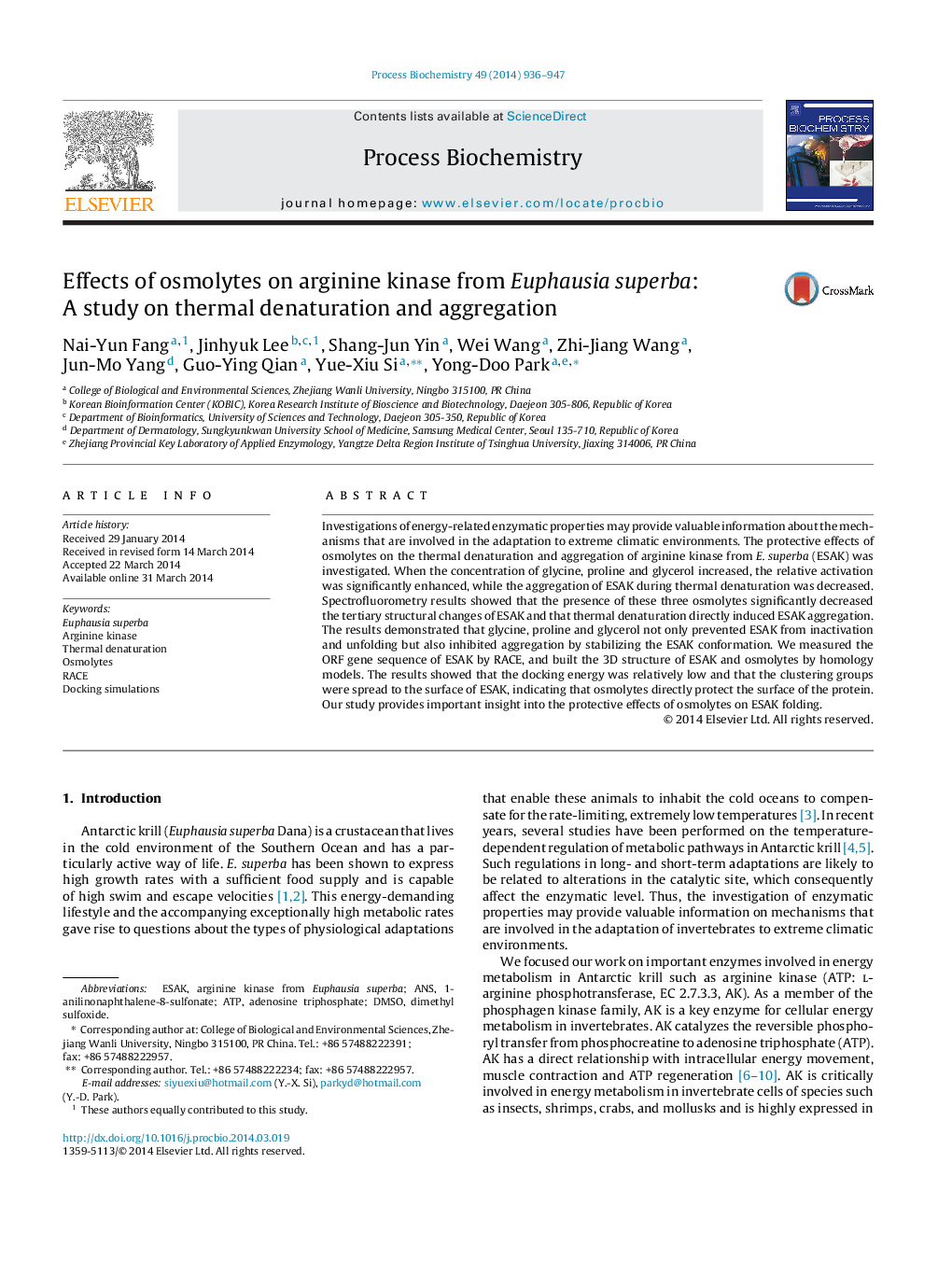| Article ID | Journal | Published Year | Pages | File Type |
|---|---|---|---|---|
| 34370 | Process Biochemistry | 2014 | 12 Pages |
•Arginine kinase (AK) thermal folding mechanisms.•ORF sequence of AK from E. superba probing by RACE and computational simulations by using its gene sequence.•Comparisons between conformational changes and catalytic functions of AK during thermal denaturation.•Osmolytes roles for preventing AK aggregation and binding mechanisms predicted by docking simulations.
Investigations of energy-related enzymatic properties may provide valuable information about the mechanisms that are involved in the adaptation to extreme climatic environments. The protective effects of osmolytes on the thermal denaturation and aggregation of arginine kinase from E. superba (ESAK) was investigated. When the concentration of glycine, proline and glycerol increased, the relative activation was significantly enhanced, while the aggregation of ESAK during thermal denaturation was decreased. Spectrofluorometry results showed that the presence of these three osmolytes significantly decreased the tertiary structural changes of ESAK and that thermal denaturation directly induced ESAK aggregation. The results demonstrated that glycine, proline and glycerol not only prevented ESAK from inactivation and unfolding but also inhibited aggregation by stabilizing the ESAK conformation. We measured the ORF gene sequence of ESAK by RACE, and built the 3D structure of ESAK and osmolytes by homology models. The results showed that the docking energy was relatively low and that the clustering groups were spread to the surface of ESAK, indicating that osmolytes directly protect the surface of the protein. Our study provides important insight into the protective effects of osmolytes on ESAK folding.
